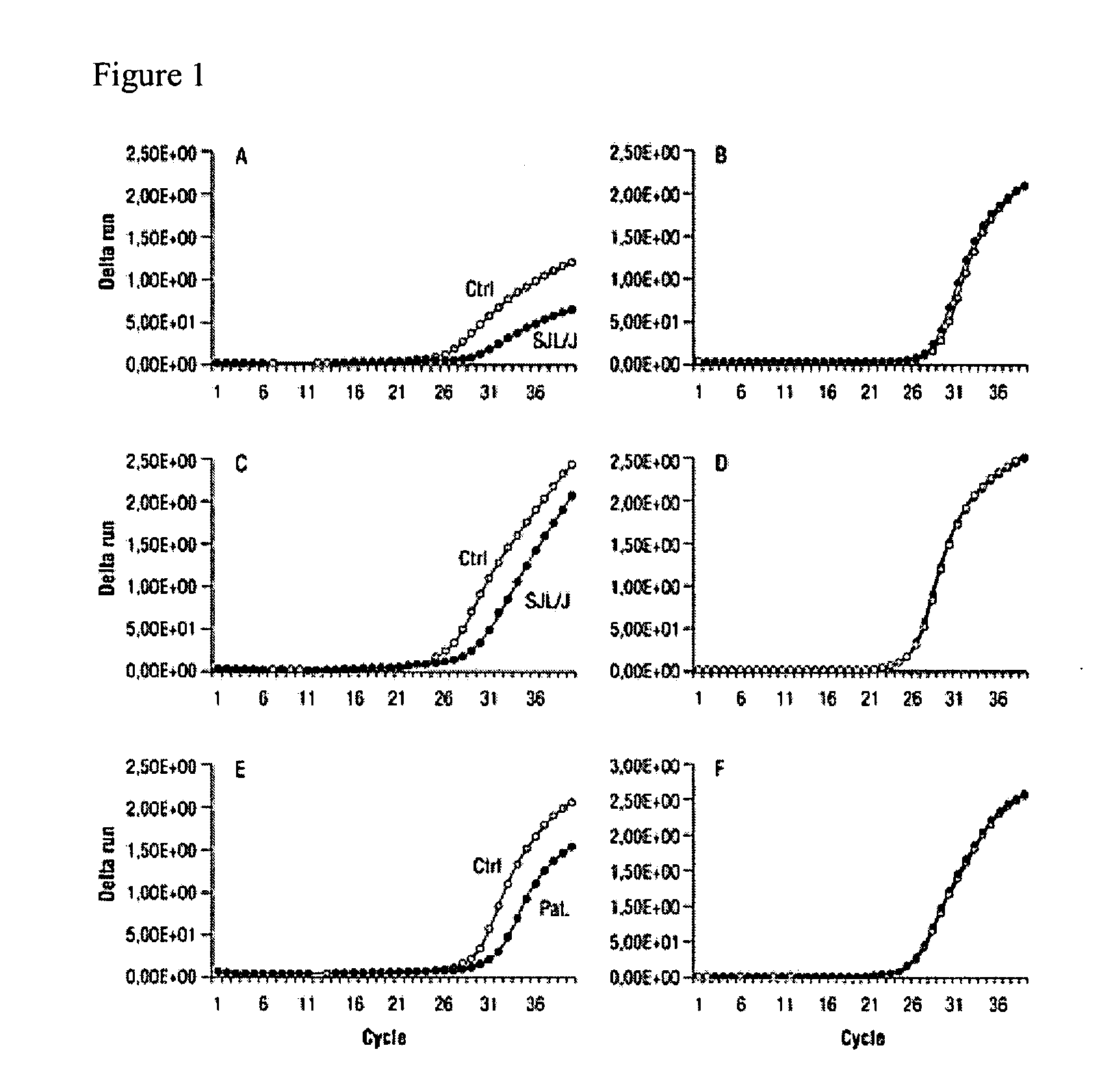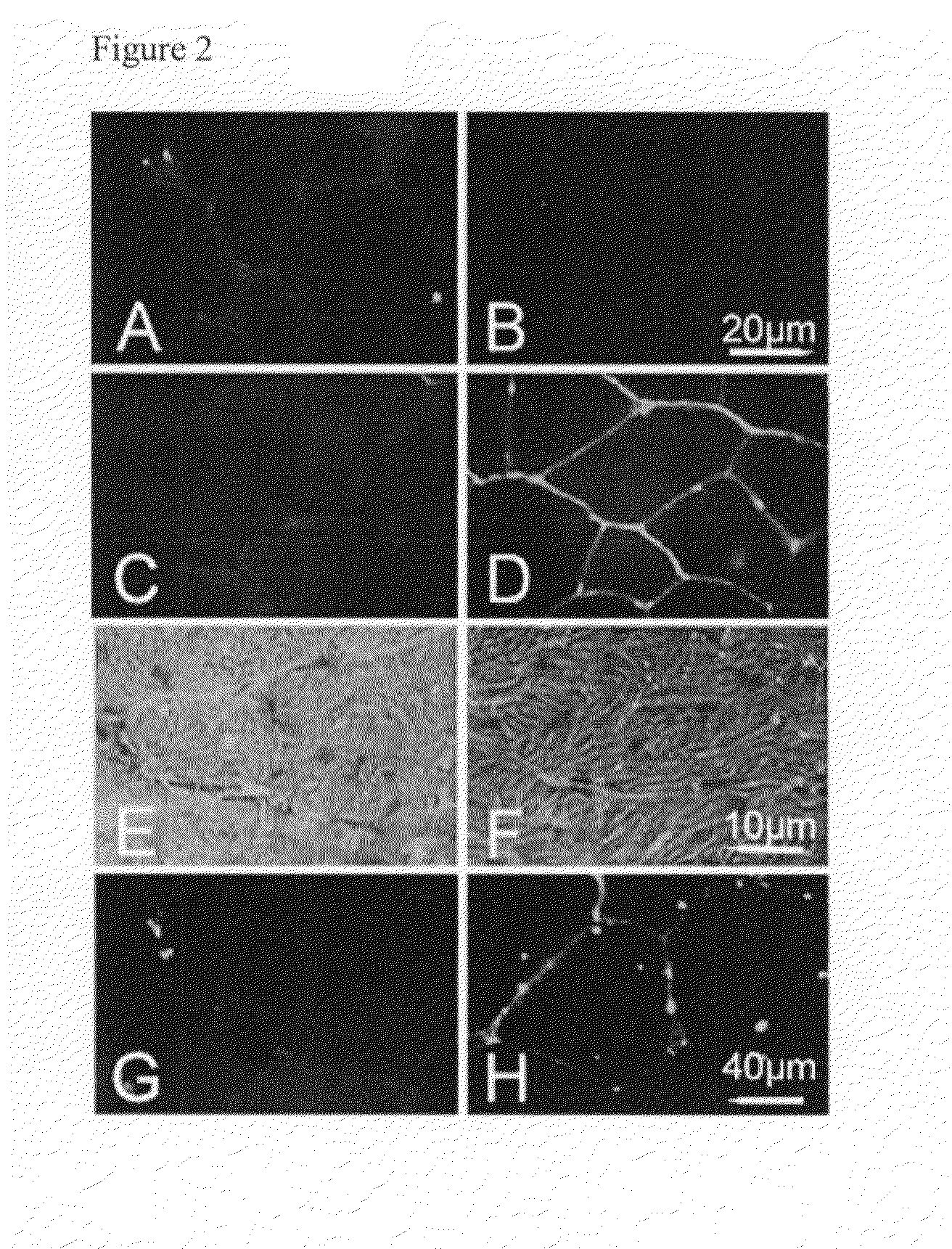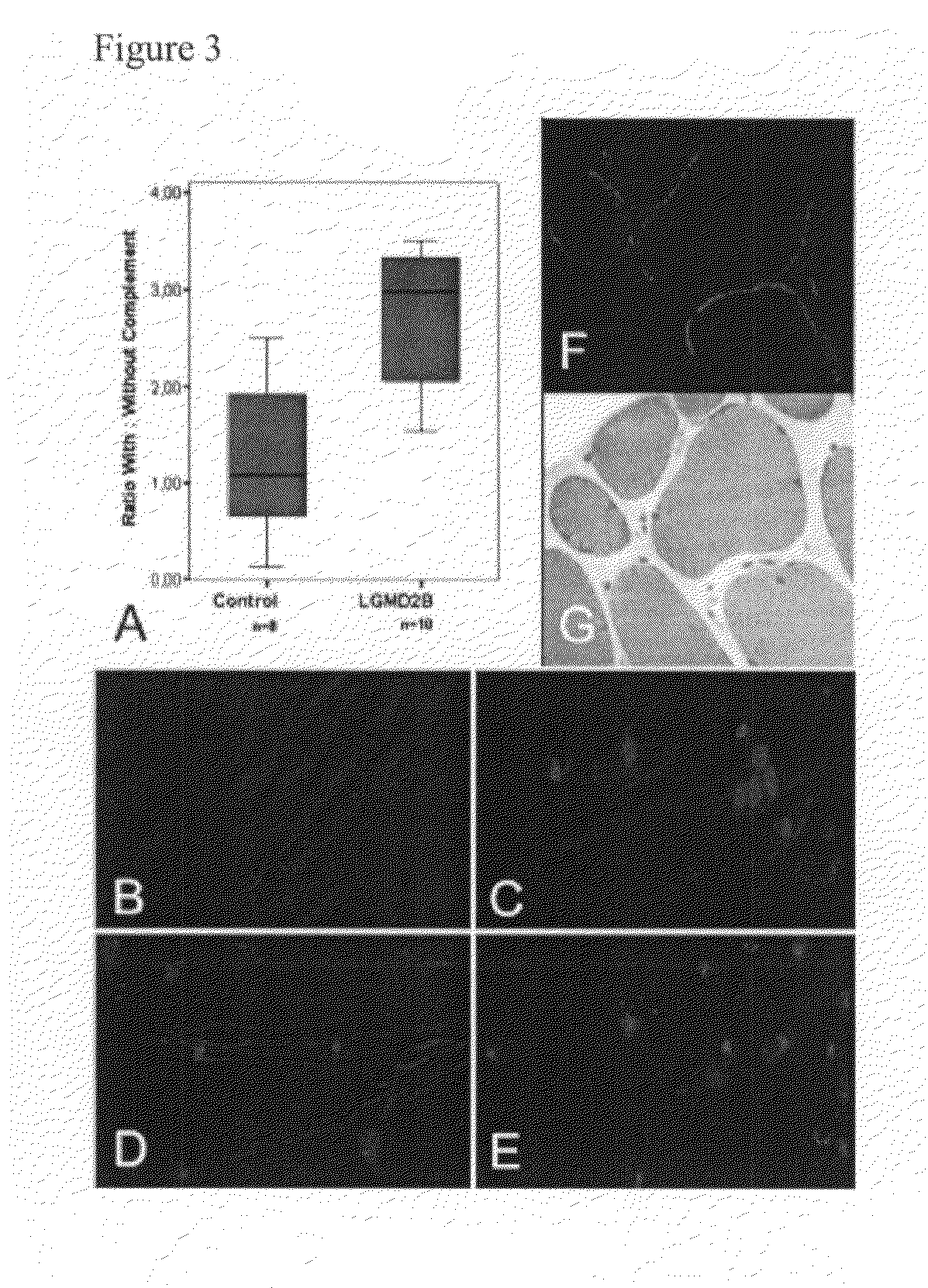Methods for the treatment of muscular dystrophy associated with dysferlin-deficiency
a muscular dystrophy and dysferlindeficiency technology, applied in the field of muscular dystrophy associated with dysferlindeficiency, can solve the problems of no known treatment, medicine or surgery that will cure muscular dystrophy, or stop the muscles from weakening, so as to reduce the necrosis of muscle fibers, and limit the generation of necrotic muscle fibers
- Summary
- Abstract
- Description
- Claims
- Application Information
AI Technical Summary
Benefits of technology
Problems solved by technology
Method used
Image
Examples
example 1
DAF / CD55 is Down-Regulated in Dysferlin-Deficient Mice
[0097]The GeneChip Murine Genome U74Av2 array was used to compare the gene expression profiles of skeletal and cardiac muscles of SJL / J mice with dysferlin deficiency to those of C57BL / 6 control mice. Analysis of gene expression in the nonpooled skeletal muscle of SJL / J vs. control mice revealed 291 differentially expressed genes at a threshold of p<0.001.
[0098]DAF1 was 5-fold down-regulated in skeletal muscle of SJL / J compared with skeletal muscle of C57 / BL6 mice, with a significance of p=0.0000009. In contrast, in left cardiac ventricle, a mild 1.5-fold up-regulation was found. Similar results were observed with DAF2 (8.2-fold down-regulation in skeletal muscle, p=0.0027; 4-fold up-regulation in heart). Therefore, analyzed intraindividually, these two complement inhibitory factors, corresponding to human CD55, are significantly differentially expressed in skeletal muscle and heart. CD59, another well-described inhibitor of comp...
example 2
DAF / CD55 is Down-Regulated in LGMD2B Patients
[0100]Next, skeletal muscle from four patients with dysferlin-deficient muscular dystrophy (LGMD2B) was studied. The diagnosis of LGMD2B was confirmed by the absence of dysferlin in immunohistochemical staining, in Western blot analysis, and by genomic sequencing of DYSF (Table III). All patients had reduced sarcolemmal CD55 expression compared with normal skeletal muscle (FIG. 2, G and H). The degree of down-regulation of CD55 varied between patients, from trace staining to complete absence. Staining for CD46 and CD59, two other complement inhibitory molecules, was normal in all patients and controls (not shown).
[0101]The expression of DAF / CD55 in human skeletal muscle was also analyzed at the RNA level by TaqMan analysis. Compared with four control specimens from healthy individuals, DAF / CD55 mRNA in LGMD2B was 2.1-fold reduced (FIGS. 1, E and F).
example 3
Dysferlin-Deficient Human Myotubes are Susceptible to Complement Attack
[0102]Functionally, the absence of CD55 should lead to an increased sensitivity to complement-mediated lysis. Human myotube cultures obtained from normal (n=2) and dysferlin-deficient human skeletal muscle (n=3; at least two independent experiments per patient) were established and exposed to complement-mediated lysis. Lysed and dead cells were identified by PI uptake. Normal human myotubes were resistant to complement-mediated lysis (FIGS. 3, A and B). This effect could be partially inhibited by preincubation with anti-CD55 Ab (FIG. 3C). On the contrary, myoblasts and myotubes obtained from patients with dysferlin deficiency were highly susceptible to complement attack (FIGS. 3, A and D). The percentage of lysed cells was not altered by the addition of anti-CD55 mAb (FIG. 3E).
[0103]The presence of the C5b9 MAC on the surface of nonnecrotic muscle fibers was demonstrated by immunohistochemistry in four of four mu...
PUM
| Property | Measurement | Unit |
|---|---|---|
| Fraction | aaaaa | aaaaa |
Abstract
Description
Claims
Application Information
 Login to View More
Login to View More - R&D
- Intellectual Property
- Life Sciences
- Materials
- Tech Scout
- Unparalleled Data Quality
- Higher Quality Content
- 60% Fewer Hallucinations
Browse by: Latest US Patents, China's latest patents, Technical Efficacy Thesaurus, Application Domain, Technology Topic, Popular Technical Reports.
© 2025 PatSnap. All rights reserved.Legal|Privacy policy|Modern Slavery Act Transparency Statement|Sitemap|About US| Contact US: help@patsnap.com



